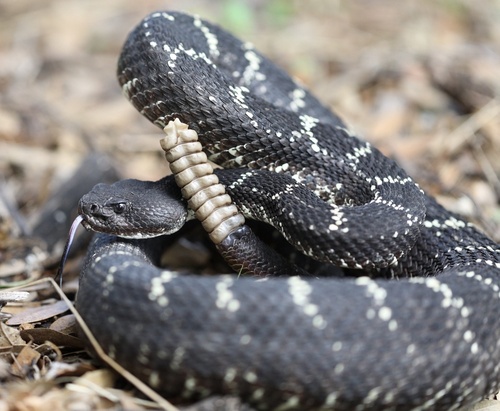
Arizona black rattlesnake
The Arizona black rattlesnake, Crotalus cerberus, is a captivating reptile known for its dramatic dark hue and remarkable color-changing ability. Found in rocky terrains, this adaptable predator contributes to the ecosystem's balance, showcasing nature's intricate interdependencies.
15-20 years
Lifespan
Length: 61 - 122 cm
Size
Low
Aggression
Characteristics
Crotalus cerberus, known as the Arizona black rattlesnake, inhabits rocky, wooded areas in the southwestern United States. It is known for its striking black coloration and the ability to change color with temperature. This rattlesnake is viviparous and plays a crucial role as both predator and prey in its ecosystem.
Distribution Range of the Arizona black rattlesnake
Crotalus cerberus, commonly known as the Arizona black rattlesnake, is native to the southwestern United States. Its geographical distribution primarily includes central and northern Arizona and extends into southwestern New Mexico and southeastern Utah.
Arizona black rattlesnake's Habitat
Environmental Conditions
The Arizona black rattlesnake typically inhabits rocky and mountainous regions, often found in pine-oak woodlands, chaparral, and mixed coniferous forests. The climate in these areas is generally arid to semi-arid, with variations between hot summers and cooler winters. These snakes are usually found at elevations ranging from 1,000 to 2,400 meters (3,280 to 7,874 feet), where the environment provides ample cover and prey availability.
Ecological Niche
Crotalus cerberus occupies a niche as a mid-level predator, feeding primarily on small mammals, birds, and occasionally reptiles. It plays a crucial role in controlling the populations of these species, thus maintaining ecological balance. The snake is well-adapted to its rocky environment, using its coloration for camouflage against predators and prey, and its heat-sensing pits to detect warm-blooded prey.
Copyright @ Nature Style Limited. All Rights Reserved.
 English
English